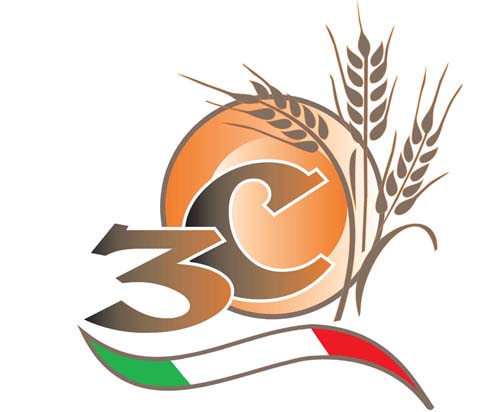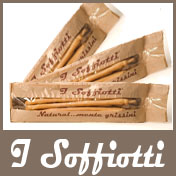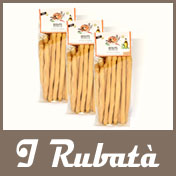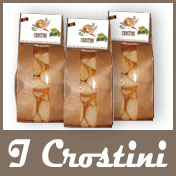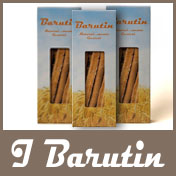I Soffiotti - Naturally breadsticks
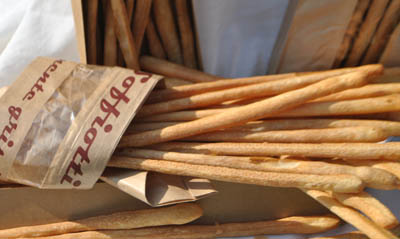
The tradition dates back the birth of the first breadstick to the year 1679 by a Turin baker named Antonio Brunero to meet the need to feed King Vittorio Emanuele II, unable to digest the bread.
Since then there have been many developments: the Asti province adopted a kind of breadstick that was called “sufiot” (blown) because the clever working process and the particular rising made it almost empty inside, giving it more digestibility and fragrance.
From this ancient recipe, handed down from father to son and from slow and natural working process were born today "I Soffiotti".
The flour and water mixture is cut into small portions, which are machined individually by "stirring" them, as it was once, strictly by hand and then started to bake: this makes "I Soffiotti" extraordinarily friable, quality absolutely not obtainable through industrial processing.
The careful selection of the flour and the finest raw materials give to "I Soffiotti" the natural taste and the crunchiness that make them suitable for every meal as natural substitutes of bread and delicate companion of each dish.
I Soffiotti are available in the variants:
Soffiotti with Extra Virgin Olive Oil
Soffiotti with Water
Soffiotti with Olives
Soffiotti with Rosemary
Soffiotti Wholemeal
Soffiotti with Mais
Soffiotti with Sesame
Soffiotti without Salt
Soffiotti Multigrain
Soffiotti with Turmeric
Soffiotti with Poppy
I Rubatà - Naturally rolled
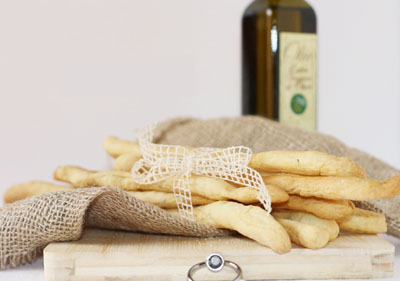
The most ancient and traditional type of breadstick is definitely the ‘Rubatà’, which in dialect means ‘fallen’ or ‘rolled’, easy to recognise for its particular lumpiness, which derives from the handmade production.
Even for the making of "I Rubatà" the flour and water mixture is cut into small portions, which are individually worked by "rolling" them, as it was once, strictly by hand and then immediately started to bake: this leads the tasty crunchiness that can't be obtained through an industrial process.
The careful selection of the flour and the best ingredients give to "I Rubatà" the natural taste and the crunchiness that make them suitable for every meal as natural substitutes of bread and delicate companion of each dish.
I Rubatà are available in the variants:
Rubatà Classics
Rubatà with Rosemary
Rubatà with Sesame
Rubatà with Olives
Rubatà with Mais
Le Monelle - Naturally tongues

It is well known that children are naughty and mischievous and they never miss the opportunity to express these features with their simple gesture of the big mouth showing tongue.
"Le Monelle" remember exactly these long and bold tongues.
Consisting of a few simple ingredients, they have become a natural alternative to bread and breadsticks.
They taste particularly good when accompanied with meats and cheeses, sauces and creams not forgetting desserts spreads.
The careful selection of the flour and the finest raw materials give to "Le Monelle" the natural taste and the crunchiness that make them suitable for every meal as natural substitutes of bread and delicate companion of each dish.
Le Monelle are available in Standard or Mini packaging in variants:
Monelle Classics
Monelle with Cheese
Monelle with Onions
Monelle with Rosemary
Monelle with Pepper and Paprika
Monelle with Tomato
Monelle with Origan
Monelle Pizza Taste
I Crostini - Naturally crunchy
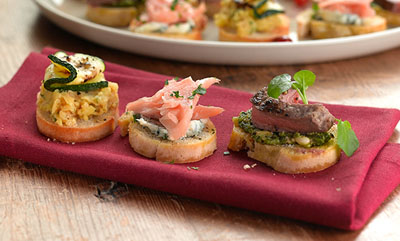
"I Crostini" 3C arise from the ancient snack tradition made with a simple slice of bread.
Thanks to the slow toasting, which exalts its flavor and friability maintaining its lightness and genuineness, "I Crostini" know how to be fragrant, crispy and tasty as it just came out of the oven.
The careful selection of the flour and the best ingredients give to "I Crostini" the natural taste and the crunchiness that make them suitable for every meal as natural substitutes of bread and delicate companion of each dish.
I Crostini are available in the variants:
Crostini with Extra Virgin Olive Oil
Crostini with Rosemary
Crostini with Pepper and Paprika
I Barutin - Naturally tasty
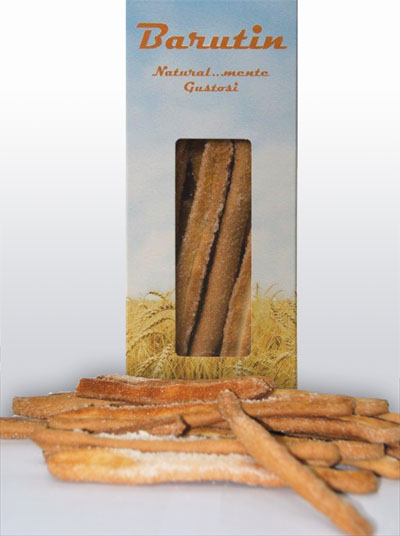
The first memories of "I Barutin" date back to the early 20th century, when our grandmothers used to bake bread in wood ovens shared by the community in the villages of the countryside.
While waiting for the oven to reach the desired temperature, these ladies used to place
on the stokehole these sweets made with bread dough and mixed with butter and sugar.
The slow cooking due to the rising temperature of the oven made unforgettable the sweetness that expanded across the valleys.
Today, during processing, the flour and water mixture is cut into small portions, which are machined individually by "stirring" them, as it was once, strictly by hand; then they are sprinkled with sugar and then started to slow cooking: this makes "I Barutin" exceptionally tasty and an integral part of the Piedmontese pastry.
I Barutin sweet from Monferrato






